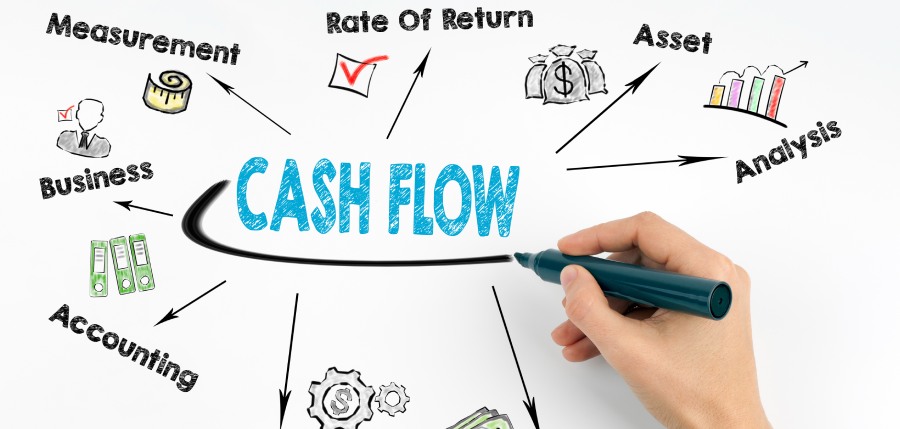
What Is Receivables Performance Management
In the complex world of business finance, receivables performance management is a critical component. It is not just about collecting money owed to your company; it is about optimizing the entire process to ensure financial stability and growth. Receivables performance management involves strategic planning, efficient processes, and effective communication. Let’s dive into the intricacies of this essential business practice.
Understanding Receivables Performance Management
Receivables performance management refers to the methods and strategies used to manage and collect accounts receivable. These are amounts owed to a company by its customers for goods or services delivered. Efficient receivables management ensures that the company maintains a healthy cash flow, reduces bad debt, and improves profitability.
The Importance of Receivables Performance Management
Ensuring Cash Flow
Cash flow is the lifeblood of any business. Efficient receivables management ensures that funds are collected promptly, keeping the cash flow steady. When cash flow is consistent, businesses can meet their financial obligations, invest in growth opportunities, and avoid the pitfalls of financial strain.
Reducing Bad Debt
Bad debt occurs when customers fail to pay what they owe. Effective receivables performance management reduces the risk of bad debt. Businesses can identify and address potential payment issues early by implementing stringent credit policies and regular follow-ups.
Improving Customer Relationships
Effective communication is key to receivables management. Regular interaction with customers regarding their account status helps maintain a positive relationship. By addressing issues promptly and professionally, businesses can enhance customer satisfaction and loyalty.
Key Components of Receivables Performance Management
Credit Policy
A well-defined credit policy sets the foundation for receivables management. This policy outlines the terms of credit, criteria for extending credit to customers, and the procedures for collections. A clear credit policy helps manage risk and sets customer expectations.
Invoicing Process
An efficient invoicing process is crucial. Accurate and timely invoices ensure customers are billed correctly and promptly. Automation can streamline invoicing, reducing errors and speeding up the process. Clear, detailed invoices help customers understand their obligations, leading to faster payments.
Collection Strategies
Collection strategies are the backbone of receivables performance management. These strategies include regular follow-ups, reminders, and, if necessary, more assertive collection methods. Effective strategies balance persistence with professionalism, ensuring that customers are encouraged to pay without feeling harassed.
Monitoring and Reporting
Regular monitoring and reporting are essential. Businesses must track the status of their receivables, identifying overdue accounts and potential issues. Detailed reports provide insights into the effectiveness of receivables management strategies and highlight areas for improvement.
Best Practices in Receivables Performance Management
Implementing Automation
Automation can significantly enhance receivables performance management. Automated invoicing, reminders, and payment processing streamline operations and reduce the chances of human error. Automation also allows staff to focus on more strategic tasks, improving overall efficiency.
Setting Clear Terms
Clear payment terms are vital. Ensure that customers understand when payments are due and any penalties for late payments. Transparent terms help set expectations and reduce disputes, leading to more timely payments.
Regular Follow-Ups
Consistent follow-ups are key to effective collections. Regular communication reminds customers of their obligations and helps resolve any issues that may delay payment. Polite but persistent follow-ups show that the company is serious about its receivables without being overly aggressive.
Offering Multiple Payment Options
Flexibility in payment methods can improve collection rates. Offering various payment options, such as credit cards, bank transfers, and online payment systems, makes it easier for customers to pay. This convenience can lead to faster and more reliable payments.
Training and Development
Investing in staff training ensures that the team handling receivables is skilled and knowledgeable. Training should cover effective communication, negotiation skills, and the use of any automated systems. A well-trained team can manage receivables more effectively, reducing delays and improving cash flow.
The Role of Technology in Receivables Performance Management
Advanced Analytics
Technology plays a crucial role in modern receivables management. Advanced analytics can predict payment behaviors, identify potential issues, and provide insights into customer trends. This information allows businesses to take proactive steps to manage their receivables more effectively
Customer Relationship Management (CRM) Systems
CRM systems integrate receivables management with broader customer relationship strategies. By centralizing customer information, businesses can better manage interactions and track account status. CRM systems enhance communication and streamline processes, leading to improved collections and customer satisfaction.
Mobile Solutions
Mobile technology offers additional convenience for both businesses and customers. Mobile invoicing, payment reminders, and payment processing allow for quick and easy transactions. Mobile solutions increase accessibility and can accelerate the payment process.
Challenges in Receivables Performance Management
Managing Customer Expectations
Balancing the need for timely payments with maintaining positive customer relationships can be challenging. Businesses must manage customer expectations through clear communication and fair policies.
Dealing with Disputes
Payment disputes are inevitable. Effective receivables management involves resolving disputes quickly and fairly. Establishing clear procedures for handling disputes helps ensure that they do not delay payments unnecessarily.
Keeping Up with Technology
Staying current with technological advancements can be difficult. However, adopting new technologies is essential for maintaining efficient receivables management processes. Businesses must be willing to invest in technology and training to stay competitive.
What Are Performance Management Tools
Performance management tools are designed to help organizations monitor, evaluate, and enhance employee performance. They align individual goals with organizational objectives, provide real-time feedback, and support professional development. By leveraging these tools, businesses can foster a culture of continuous improvement and high performance.
Key Performance Management Tools
Goal Setting Tools
SMART Goals Framework
SMART (Specific, Measurable, Achievable, Relevant, Time-bound) goals provide a clear framework for setting objectives. This tool ensures that goals are well-defined and attainable, helping employees focus their efforts and achieve better results. By using the SMART goals framework, businesses can enhance productivity and drive success.
OKRs (Objectives and Key Results)
OKRs are another popular goal-setting tool. They involve defining specific objectives and the key results needed to achieve them. OKRs provide a clear roadmap for employees, aligning their efforts with the organization’s strategic goals. This alignment fosters a sense of purpose and direction, motivating employees to perform at their best.
Feedback and Appraisal Tools
360-Degree Feedback
360-degree feedback involves gathering feedback from various sources, including peers, subordinates, and supervisors. This comprehensive approach provides employees with a well-rounded view of their performance. It highlights strengths and areas for improvement, fostering personal and professional growth.
Continuous Performance Management
Continuous performance management tools facilitate ongoing feedback and regular check-ins. Unlike traditional annual reviews, these tools encourage frequent communication between employees and managers. Regular feedback helps employees stay on track, adjust their performance, and continuously improve.
Employee Development Tools
Learning Management Systems (LMS)
Learning management systems are essential for employee development. These platforms provide access to a wide range of training resources, including courses, webinars, and e-learning modules. LMS tools support continuous learning, helping employees develop new skills and stay updated with industry trends.
Personal Development Plans (PDPs)
Personal development plans are customized roadmaps for individual growth. PDPs outline the skills and competencies employees need to develop and the steps required to achieve them. These plans support career advancement and professional growth, benefiting both the employee and the organization.
Performance Analytics Tools
Dashboards and Reporting
Performance dashboards and reporting tools provide real-time insights into key performance indicators (KPIs). These tools help managers track progress, identify trends, and make data-driven decisions. By visualizing performance data, dashboards facilitate better understanding and communication of performance metrics.
Predictive Analytics
Predictive analytics tools use historical data to forecast future performance. These tools help organizations anticipate trends, identify potential issues, and develop proactive strategies. By leveraging predictive analytics, businesses can stay ahead of the competition and drive continuous improvement.
Communication and Collaboration Tools
Project Management Software
Project management software facilitates collaboration and communication among team members. These tools provide a central platform for managing tasks, tracking progress, and sharing updates. Effective project management software enhances teamwork and ensures that projects are completed on time and within budget.
Communication Platforms
Communication platforms, such as Slack or Microsoft Teams, support real-time collaboration and information sharing. These tools enable employees to communicate effectively, share feedback, and resolve issues promptly. Improved communication fosters a collaborative work environment and boosts overall performance.
Benefits of Using Performance Management Tools
Enhanced Productivity
Performance management tools streamline processes and provide clear goals, boosting productivity. By facilitating real-time feedback and continuous improvement, these tools help employees stay focused and perform at their best.
Improved Employee Engagement
Engaged employees are more committed and motivated. Performance management tools support employee engagement by recognizing achievements, providing development opportunities, and fostering a positive work environment.
Data-Driven Decision Making
Performance management tools provide valuable data and insights. This information supports data-driven decision-making, helping managers develop effective strategies and optimize performance.
Better Alignment with Organizational Goals
By aligning individual goals with organizational objectives, performance management tools ensure that everyone is working towards the same vision. This alignment enhances coherence and drives organizational success.
Choosing the Right Performance Management Tools
Assess Your Needs
Before selecting performance management tools, assess your organization’s needs. Identify the areas where you need improvement and the specific features you require. This assessment will help you choose the tools that best align with your goals.
Consider Scalability
Choose tools that can grow with your organization. Scalability ensures that the tools remain effective as your business expands and your needs evolve. Invest in solutions that offer flexibility and can adapt to changing requirements.
Evaluate User Experience
User experience is crucial for the successful implementation of performance management tools. Select tools that are intuitive and easy to use, ensuring that employees can quickly adapt and leverage the features effectively.
Look for Integration Capabilities
Ensure that the performance management tools you choose can integrate with your existing systems. Seamless integration enhances efficiency and reduces the complexity of managing multiple platforms.
What Is Performance Management Strategy
A performance management strategy is more than just annual reviews and performance appraisals. It encompasses a range of activities designed to optimize employee performance and drive organizational success. This strategy includes goal setting, continuous feedback, employee development, and performance measurement. By integrating these elements, organizations can create a culture of high performance and continuous improvement.
Key Components of a Performance Management Strategy
Goal Setting and Alignment
SMART Goals
Setting SMART (Specific, Measurable, Achievable, Relevant, Time-bound) goals is a cornerstone of any performance management strategy. These goals provide clear direction and expectations, helping employees understand what they need to achieve. SMART goals align individual efforts with organizational objectives, ensuring everyone works towards the same targets.
Cascading Goals
Cascading goals involve breaking down overarching organizational goals into smaller, manageable objectives for teams and individuals. This approach ensures that every level of the organization is aligned and contributes to the overall mission. Cascading goals create a clear line of sight from individual tasks to strategic objectives, fostering accountability and focus.
Continuous Feedback and Coaching
Regular Check-Ins
Regular check-ins between managers and employees are crucial for effective performance management. These meetings provide opportunities to discuss progress, address challenges, and adjust goals as needed. Continuous feedback helps employees stay on track and make real-time improvements.
Constructive Feedback
Constructive feedback focuses on specific behaviors and outcomes, providing actionable insights for improvement. Effective feedback is timely, relevant, and balanced, highlighting both strengths and areas for development. Constructive feedback fosters a culture of learning and growth, motivating employees to enhance their performance.
Employee Development and Training
Personalized Development Plans
Personalized development plans outline the skills and competencies employees need to develop to advance their careers. These plans are tailored to individual needs and aspirations, ensuring that employees receive the support and resources necessary for growth. Investing in employee development benefits both the individual and the organization.
Learning Opportunities
Providing diverse learning opportunities, such as workshops, online courses, and mentorship programs, supports continuous professional development. Encouraging employees to engage in ongoing learning helps them stay current with industry trends and enhances their skills. This commitment to development drives innovation and competitiveness.
Performance Measurement and Evaluation
Key Performance Indicators (KPIs)
Key performance indicators (KPIs) are metrics used to evaluate employee performance against specific goals. KPIs provide objective data on progress and outcomes, enabling managers to make informed decisions. Regularly reviewing KPIs helps identify trends, address issues, and recognize achievements.
Performance Reviews
While continuous feedback is essential, formal performance reviews also play a critical role. These reviews provide a structured opportunity to assess overall performance, set new goals, and discuss career development. Performance reviews should be comprehensive, fair, and aligned with the organization’s strategic objectives.
Benefits of a Performance Management Strategy
Enhanced Employee Performance
A well-implemented performance management strategy enhances employee performance by providing clear goals, continuous feedback, and development opportunities. Employees who understand their roles and receive regular support are more likely to excel and contribute to organizational success.
Increased Employee Engagement
Engaged employees are more committed, motivated, and productive. A performance management strategy fosters engagement by recognizing achievements, involving employees in goal-setting, and supporting their development. Engaged employees are more likely to stay with the organization and contribute positively to its culture.
Better Alignment with Organizational Goals
Aligning individual and team goals with organizational objectives ensures that everyone is working towards the same vision. This alignment enhances coherence, drives strategic initiatives, and improves overall performance. A clear connection between personal and organizational goals fosters a sense of purpose and direction.
Improved Decision-Making
Performance management strategies provide valuable data and insights, supporting informed decision-making. By tracking progress, identifying trends, and addressing issues, managers can make strategic decisions that drive improvement and innovation. Data-driven decisions enhance efficiency and effectiveness.
Fostering a Culture of Continuous Improvement
A performance management strategy promotes a culture of continuous improvement. By regularly setting and reviewing goals, providing feedback, and encouraging development, organizations can foster an environment where employees strive for excellence. This culture of continuous improvement drives long-term success and competitiveness.
Implementing a Performance Management Strategy
Assess Organizational Needs
Before implementing a performance management strategy, assess your organization’s needs and objectives. Identify areas for improvement and the specific goals you want to achieve. This assessment will guide the development of a tailored strategy that aligns with your organizational priorities.
Develop Clear Policies and Procedures
Establish clear policies and procedures for performance management. Define the processes for goal setting, feedback, development, and evaluation. Ensure that these policies are communicated effectively to all employees and consistently applied across the organization.
Train Managers and Employees
Provide training for managers and employees on the performance management strategy. Equip them with the skills and knowledge needed to set goals, provide feedback, and engage in constructive performance discussions. Effective training ensures that everyone understands their roles and responsibilities.
Monitor and Adjust
Regularly monitor the implementation of the performance management strategy and make necessary adjustments. Gather feedback from employees and managers to identify areas for improvement. Continuous monitoring and adjustment ensure that the strategy remains effective and aligned with organizational goals.
What Is Receivables Performance Management – Key Takeaways
- Receivables performance management is crucial in business finance for optimizing the collection process to ensure financial stability and growth.
- It involves methods and strategies to manage and collect accounts receivable, ensuring healthy cash flow and reduced bad debt.
- Efficient receivables management ensures prompt fund collection, allowing businesses to meet financial obligations and invest in growth opportunities.
- Effective receivables performance management reduces bad debt risk by implementing stringent credit policies and regular follow-ups.
- Regular interaction with customers regarding account status maintains positive relationships, enhancing customer satisfaction and loyalty.
- A well-defined credit policy outlines terms, criteria, and procedures for extending credit, managing risk, and setting customer expectations.
- An efficient invoicing process ensures accurate and timely billing, with automation reducing errors and speeding up the process.
- Collection strategies, including regular follow-ups and reminders, balance persistence with professionalism, encouraging prompt payments.
- Regular monitoring and reporting track receivables status, identifying overdue accounts and potential issues, and highlighting areas for improvement.
- Automation enhances efficiency by streamlining invoicing, reminders, and payment processing, allowing staff to focus on strategic tasks.
- Clear payment terms set customer expectations and reduce disputes, leading to more timely payments and improved collection rates.
- Training staff in effective communication, negotiation skills, and automated systems ensures knowledgeable management of receivables, improving cash flow.
What Is Receivables Performance Management – FAQ
Q. What is receivables performance management?
Receivables performance management refers to the methods and strategies used to manage and collect accounts receivable. These are amounts owed to a company by its customers for goods or services delivered. Efficient receivables management ensures healthy cash flow, reduces bad debt, and improves profitability.
Q. Why is receivables performance management important for businesses?
Effective receivables performance management is crucial for maintaining steady cash flow. It helps businesses meet their financial obligations, invest in growth opportunities, and avoid financial strain. By reducing bad debt and enhancing customer relationships, it contributes to overall financial stability and success.
Q. What are the key components of receivables performance management?
The key components include a well-defined credit policy, an efficient invoicing process, effective collection strategies, and regular monitoring and reporting. These elements work together to ensure timely collections, reduce bad debt risk, and maintain positive customer relationships.
Q. How does automation enhance receivables performance management?
Automation streamlines invoicing, payment reminders, and processing, reducing the chances of human error. It allows staff to focus on strategic tasks, improving overall efficiency. Automated systems also enable faster transactions, leading to quicker payments and better cash flow management.
Q. What are some best practices for effective receivables performance management?
Best practices include setting clear payment terms, regular follow-ups, offering multiple payment options, and investing in staff training. Clear communication, flexible payment methods, and skilled personnel help ensure that receivables are managed efficiently, reducing delays and enhancing cash flow.
Search
Categories
Related Articles

What Is Cash Flow Management In Business
Cash flow management is the lifeblood of any business, large or small. It’s the art of balancing the money coming in with the money going out, ensuring that a business can meet its obligations and thrive. Mastering cash flow management empowers companies not only to survive but to strategically plan for future growth. Let’s dive…
Read More
What Is Stress And Stress Management
In the modern world, stress has become a constant companion for many of us. It infiltrates our daily lives, impacting our health, relationships, and overall well-being. Understanding stress and learning how to manage it can transform how we experience life’s challenges, leading to a more balanced and fulfilling existence. Understanding Stress Stress is the body’s…
Read More
How To Manage Stress Management
Stress is a constant companion in our fast-paced world. It can affect our health, relationships, and overall quality of life. However, understanding and managing stress can transform how we experience daily challenges. This article explores practical strategies for stress management, guiding you towards a calmer, more balanced life. Understanding Stress Stress is the body’s response…
Read More
Why Stress Management Is Important
In the intricate dance of life, where numerous demands tug at our attention, the importance of managing stress cannot be overstated. It is the silent undercurrent that can dictate the quality of our days and the tranquillity of our minds. Understanding the depth of stress management’s impact can enlighten and empower us to lead more…
Read More
What Are The Benefits Of Stress Management
In our brisk and often bustling lives, stress management is not merely a practice but a necessity. Understanding and harnessing the profound benefits of stress management can transform our daily experiences, leading to a richer, more fulfilling life. This article delves into the essential advantages of managing stress effectively and provides insights into how it…
Read More
What Does The Bible Say About Stress Management
In our journey through life, stress is an inevitable companion. It can cloud our days and unsettle our nights. Yet, the ancient texts of the Bible offer a wealth of wisdom on managing stress, urging us to find peace and strength beyond our earthly troubles. This article explores the biblical perspective on stress management, offering…
Read More




